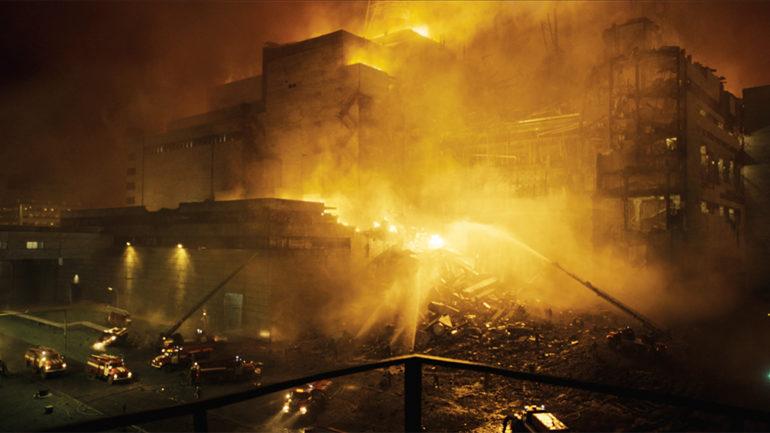Collaboration Connects Crafts Across Creative Arts Emmys Categories
By Karen Idelson
LOS ANGELES (Variety.com) – With 97 Emmys set to be given out over the two-night Creative Arts ceremony, it can be easy to forget that the silos the Television Academy creates for awards purposes belie the need for crafts departments to collaborate as much as possible to create a successful show.
Ask even casually, and artisans at just about every stage of production will stop to acknowledge their crew, co-workers and the departments whose work intertwines with their own. For double Emmy-nommed (“True Detective,” “Deadwood”) sound editor Mandell Winter, the producers, director and film editor are his closest collaborators. He works with them to get a careful understanding of what sounds are needed for a project. He also talks with other sound editors to ensure whatever they need makes it to the mixing stage and is part of the overall editorial process, making adjustments as needed.
“It’s really important to have an understanding of how long it takes to do certain things,” says Winter. “In TV production, it’s a short timeline so you want to give people what they need to do the work. For ‘Deadwood,’ we used many of the established sounds from the series, but we also wanted to lean into authenticity. I was not on the original series but Ben Cook, the person who was my connection to this project was, so he and I collaborated, too.”
Sometimes, collaboration can be the difference between life and death on a project.
“What we were doing on ‘Free Solo’ was collaboration with a capital ‘C’ every time we were shooting,” says the movie’s Emmy-nominated co-helmer Jimmy Chin. “We had to assemble a crew of professional-level climbers who also knew how to shoot without getting in each other’s shots, and who didn’t disturb the actual climbs that were happening. It’s all very much collaboration and communication and a sense of respect for everyone you’re working with to make the movie happen, and you have to trust each other.”
Even when your crew isn’t scaling the side of a cliff, developing a shorthand and way of communication is vital to a project and can be the secret sauce for a tight turnaround.
Emmy-nominated editor Tom Jarvis, who worked on the Paul McCartney episode of “Carpool Karaoke,” collaborated with producers and James Corden to deliver the show within time constraints and for multiple platforms.
“We’re following behind James and Paul McCartney and we’re realizing that everything that’s happening is just gold,” says Jarvis. “And it’s amazing but then we’re also realizing we’re going to have to make it right for the show and online. It was a careful process, where you see what are the most emotional moments and you’re there as an editor to support everything that’s happening and help make something the very best it can be.”
Working with producers and Corden, Jarvis and his team came up with a 40-minute cut that then became a 23-minute cut for the show, which was the longest-ever episode of “.” Jarvis acknowledges they had to leave some moments behind, and it was vital to have open discussions with the team when deciding what would stay.
Emmy-nommed production designer Elisabeth Williams says the dark world of Hulu’s “The Handmaid’s Tale” benefits when departments trust each other and communicate.
“There has to be one vision for all the departments for there to be the same look and feeling across what’s being done for the show,” says Williams.
“The relationship between the director, the DP and production design should be strong because they understand the power of locations and what those locations can bring to a show. Everyone brings their own flavor to the show and the process, but also everyone understands that, for the vibe of the show overall to be one thing, you have to be consistent.
“There also has to be respect because you’re going to give your all, give everything you have to a project and you might spend hours and hours on something that you were asked to create but then they decide that it’s not working for the show overall and they cut this thing you worked so hard to do. So you have to let it go and move on. You can’t have an ego. That’s collaboration, too.”
On “Chernobyl,” Emmy-nommed visual-effects supervisor Max Dennison worked with production designer Luke Hull and director Johan Renck to make the most realistic version of the disaster possible. As it often does, this means Dennison designed the VFX to be as invisible as possible.
“ today doesn’t look like it did in 1986,” says Dennison. “We had an existing CGI model of the entire Chernobyl site, which covers about 12-square kilometers [4.6 square miles]. And it was low-res, but was accurate in terms of geography of the buildings, the reactors and other buildings. The buggiest challenge was to build a full-scale CG model of the environment around the reactor and the damaged reactor itself. We were very lucky to have a lot of photographic reference from all the photos that had been taken by the Russians at the time because this had never happened before and it wasn’t exactly clear what would happen under many of the circumstances that existed there,” Dennison says.
Dennison and his team also used information from the decommissioned Ignalina Nuclear Power Plant in eastern Lithuania to help them model Chernobyl. Sometimes, the collaboration didn’t come with as much research material.
“On the night of the explosion there were eyewitness accounts of a blue glow shooting up out of the reactor, and there’s no reference for that,” says Dennison. “Johan was very specific about wanting this in there. We had to make sure it didn’t look contrived and that it looked like it really happened without taking you out if the story, because we’re there to make you believe this is happening and you’re watching it happen.”

